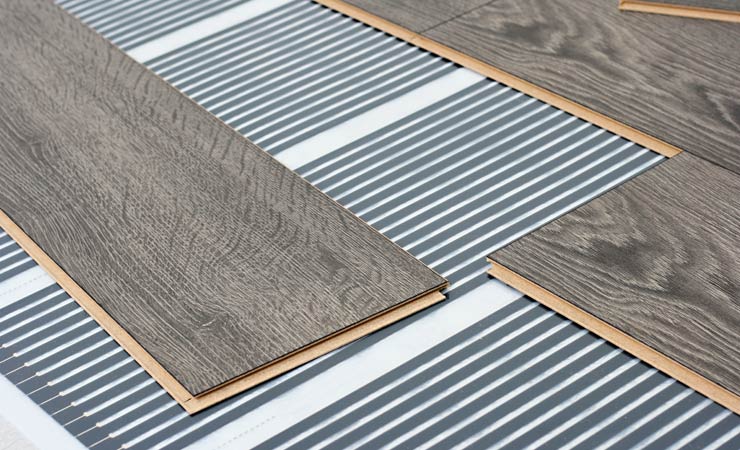
At the moment, many people are concerned with how to deal with rising energy costs and which heating method is future-proof and sustainable.
The topic of infrared heating is also mentioned again and again. If you look for this type of heating on the Internet, you will find a lot of information, some of which is contradictory. Therefore, the most important facts have been summarized in this article.
The function of infrared heaters
The infrared heater is one of the electric heaters. The objects in the room as well as the walls and the floor are heated evenly with infrared rays.
This principle differs from conventional types of heating, in which the room envelope is heated.
The principle of heat wave heating creates a very pleasant room climate.

Infrared heating and health
The radiation emitted by infrared heaters is harmless to humans. Although at first glance one might think that long-term exposure to infrared radiation is not good for humans. This type of radiation is also emitted by tiled stoves and the sun.
These are long-wave infrared C rays and not UV rays. Thus there is no health risk for humans. Infrared heating is also very interesting for allergy sufferers. In contrast to conventional heating systems, with this type of heating there is no air circulation and therefore no dust turbulence.
Positive properties of infrared heaters
Infrared heaters have a number of advantages over convection heaters. For example, the inexpensive purchase, the simple assembly and the diverse design options stand out. Especially in the current times, the acquisition costs are a big issue. These are low with infrared heaters, depending on the design and size, the infrared heaters cost a fraction of conventional heating systems.
Another positive factor is that there are no maintenance costs and electric heaters from brand manufacturers have a long service life. Follow-up costs are therefore not to be expected.
The simple installation of the heating panels results in many application and design options.
It can be integrated in a mirror, in the towel holder or in the lighting. A special highlight are the paintings or motifs. Some manufacturers offer a number of different motifs and it may also be possible to create your own motif.
This turns the heater into an eye-catcher. If infrared heating is to be used in a new building project, experts advise discussing the electrical planning at the start of the planning phase.

The apparent disadvantages of infrared heaters
If you deal with infrared heaters, the high operating costs are quickly mentioned as a disadvantage and that this type of heating is not profitable as a result. However, current studies show that infrared heating can be very effective in the long term. High-quality heating panels from brand suppliers heat the fireclay core so that the heat can be stored well. After switching off, this plate cools down very slowly. If the temperature falls below the target value, the infrared heating switches on again automatically. As a result, there are only very small temperature fluctuations.
In comparison, a conventional heating system first has to heat up completely in order to warm up the room. The infrared heaters require less energy. A study by the Konstanz University of Applied Sciences makes it clear that infrared heating (especially in combination with a photovoltaic system) with an assumed service life of 50 years and including maintenance, production and disposal provides better parameters than a system with a conventional heat pump.
Heating with electricity today? Given the rising energy costs, this is probably a disadvantage of this type of heating. In combination with a photovoltaic system, however, you become partially independent of energy suppliers. You become self-sufficient and thus self-sufficient. You generate most of the electricity for the infrared heating yourself.
This reduces the running costs for the heating system, since in future the building will be heated with its own green electricity. Supplemented with a solar battery, the electricity can be stored for consumption in the evening.
Conclusion: Should you opt for infrared heating?
In new, modern residential and office buildings, the use of infrared heaters definitely makes sense. Thanks to the high standard of insulation, the heat generated can be stored for a long time. Therefore, the electricity costs are kept low. Infrared heating can also be interesting for old buildings. In cases of conversion of old buildings, however, you should seek advice from an expert.
It depends on the use, the service life and the quality of the insulation. It is also important to know that the infrared heater can be used both as a main heater and as an additional heater.
Here you can read the detailed guide to infrared heating on which the information presented here is largely based.
Source: https://blogg.de/alternative-infrarotheizung/


